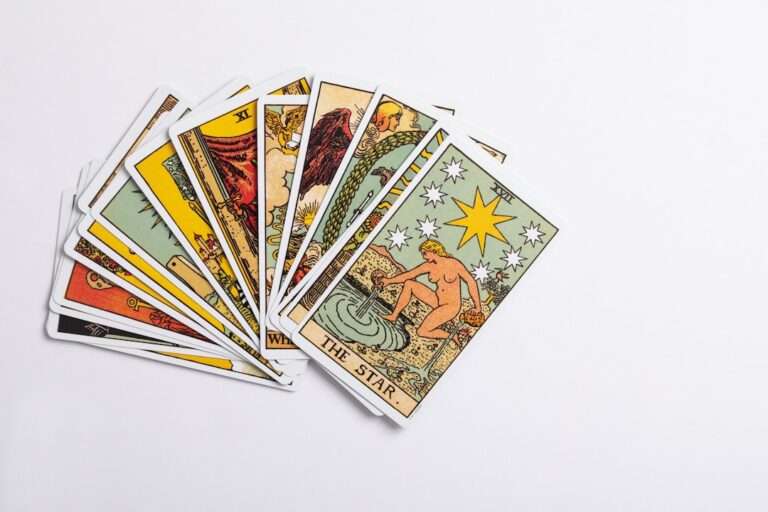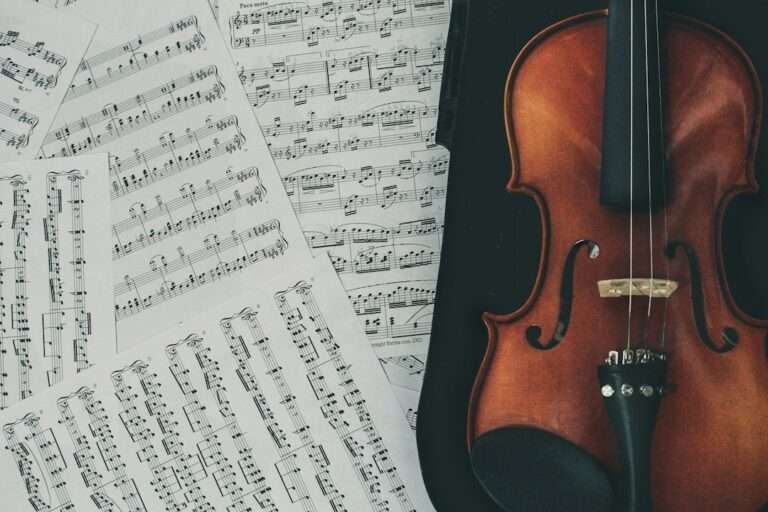Art Symbolism – The Ultimate Guide

Art symbolism is a powerful tool that has been used throughout history to convey deeper meanings and messages in artworks. It allows artists to communicate ideas, emotions, and concepts that may be difficult to express through words alone. Symbolism in art can be found in various forms, such as colors, animals, religious and spiritual imagery, nature, and human figures. By understanding the symbolism behind artworks, we can gain a deeper appreciation for the artist’s intentions and the cultural and historical context in which the artwork was created.
Understanding the Basics of Art Symbolism: A Comprehensive Overview
Art symbolism refers to the use of symbols or symbolic elements in artworks to represent ideas, emotions, or concepts. These symbols can be visual representations of abstract concepts or cultural and historical references. The use of symbolism in art dates back to ancient times and has evolved over the centuries.
Symbols in art can have universal meanings or be specific to a particular culture or time. For example, the color red is often associated with passion and love in Western cultures, while it symbolizes luck and prosperity in Chinese culture. Similarly, animals like the lion are often seen as symbols of strength and power, while birds can represent freedom and spirituality.
Decoding the Hidden Meanings Behind Famous Artworks: A Guide to Symbolism
Many famous artworks throughout history contain hidden meanings and symbolic elements that require interpretation to fully understand their significance. For example, Leonardo da Vinci’s “The Last Supper” is filled with symbolism, from the positioning of the figures to the use of light and shadow. The painting depicts the biblical scene of Jesus’ last meal with his disciples, but it also conveys deeper themes of betrayal and sacrifice.
In addition to religious symbolism, art movements like Surrealism and Cubism also incorporated symbolic elements into their works. Salvador Dali’s “The Persistence of Memory” is a prime example of Surrealist art that uses symbolism to explore the concept of time and memory. The melting clocks and distorted landscapes in the painting represent the fluidity and subjectivity of our perception of time.
The Role of Art Symbolism in Different Cultures and Time Periods
Art symbolism is not limited to a specific culture or time. It has been used by artists from various cultures and throughout different historical periods to convey their ideas and beliefs. For example, ancient Egyptian art often used symbols like the Ankh, which represented life, and the Eye of Horus, which symbolized protection and healing.
Similarly, Native American art is rich in symbolism, with each tribe having its unique symbols and meanings. The use of animals, geometric patterns, and natural elements like feathers and shells are common in Native American art and carry spiritual significance.
Comparing symbolism across different cultures and periods can reveal similarities and differences in how symbols are used to convey meaning. For example, the lotus flower is a symbol of purity and enlightenment in both ancient Egyptian and Buddhist art, despite the cultural differences between these two civilizations.
Exploring the Use of Color Symbolism in Art: What Do Different Colors Represent?
Color symbolism is a powerful tool used by artists to evoke emotions and convey meaning in their artworks. Different colors have different associations and can elicit specific responses from viewers. For example, red is often associated with passion, love, and anger, while blue is often associated with calmness, tranquility, and sadness.
In art history, color symbolism has been used extensively. In Renaissance art, for example, the color red was often used to symbolize power and wealth, while blue was associated with the Virgin Mary and represented purity and divinity.
The Symbolism of Animals in Art: From Mythology to Modern Times

Animals have long been used as symbols in art, representing various qualities and characteristics. In ancient mythology, animals were often associated with gods and goddesses and represented specific virtues or powers. For example, the owl was associated with wisdom in Greek mythology, while the lion symbolized strength and courage.
In contemporary art, animals continue to be used as symbols to convey deeper meanings. Artists like Damien Hirst often incorporate animals into their artworks to explore themes of life, death, and the human condition. Hirst’s famous artwork “The Physical Impossibility of Death in the Mind of Someone Living” features a preserved shark in a tank of formaldehyde, symbolizing mortality and the fragility of life.
The Significance of Religious and Spiritual Symbolism in Art
Religious and spiritual symbolism has played a significant role in art throughout history. Many religious artworks are filled with symbols that represent specific religious beliefs and concepts. For example, the cross is a powerful symbol in Christianity, representing the crucifixion and resurrection of Jesus Christ.
In addition to religious symbolism, spiritual symbolism can also be found in art. Artists often use symbols like angels, halos, and light to represent spiritual enlightenment and transcendence. The use of these symbols can evoke a sense of awe and wonder in viewers.
Unraveling the Symbolism of Nature in Art: Trees, Flowers, and Landscapes
Nature has long been a source of inspiration for artists, and it is often imbued with symbolic meaning. Trees, flowers, and landscapes can represent various ideas and emotions in art. For example, the cherry blossom is a symbol of beauty and transience in Japanese art, while the oak tree is often associated with strength and endurance.
Landscapes can also carry symbolic meaning in art. In Romanticism, for example, landscapes were often used to convey emotions and reflect the artist’s state of mind. The use of dramatic lighting and stormy skies in paintings like Caspar David Friedrich’s “Wanderer above the Sea of Fog” symbolized the sublime and the awe-inspiring power of nature.
The Symbolism of Human Figures in Art: Postures, Gestures, and Expressions
Human figures have been a central subject in art for centuries, and they often carry symbolic meaning. The way a figure is posed, the gestures they make, and their facial expressions can all convey specific emotions and ideas. For example, a figure with their arms crossed may symbolize defensiveness or resistance, while a figure with their hands raised may symbolize surrender or submission.
In religious art, human figures often represent specific biblical characters or saints. The way these figures are depicted can convey their virtues or attributes. For example, in Renaissance art, the Virgin Mary is often depicted with a gentle expression and a serene posture, symbolizing her purity and divinity.
Examining the Use of Symbolism in Contemporary Art: From Pop Art to Street Art
Contemporary art has embraced symbolism as a means of exploring complex ideas and critiquing society. Artists like Andy Warhol and Roy Lichtenstein used symbols from popular culture to comment on consumerism and mass media. Warhol’s iconic Campbell’s Soup Cans, for example, symbolize the commodification of art and the mass production of consumer goods.
Street artists like Banksy also use symbolism to convey political and social messages. His famous artwork “Girl with a Balloon” features a young girl reaching out for a heart-shaped balloon, symbolizing hope and innocence. The artwork has been interpreted as a commentary on the fleeting nature of love and the pursuit of happiness.
The Power of Art Symbolism: How It Can Influence Our Emotions and Perception
Art symbolism has the power to evoke strong emotions and shape our perception of the world around us. By using symbols, artists can tap into universal human experiences and create artworks that resonate with viewers on a deep level. Symbols can transcend language and cultural barriers, allowing art to communicate across different societies and periods.
Art symbolism has also played a significant role in shaping society and culture. Throughout history, art has been used as a means of propaganda, conveying political and religious messages to the masses. For example, during the Renaissance, religious artworks were used to promote the power and authority of the Catholic Church.
Conclusion
In conclusion, art symbolism is a fundamental aspect of art history and contemporary art. It allows artists to convey deeper meanings and messages in their artworks, evoking emotions and shaping our perception of the world.
By understanding the symbolism behind artworks, we can gain a deeper appreciation for the artist’s intentions and the cultural and historical context in which the artwork was created. Art symbolism is a powerful tool that can transcend language and cultural barriers, making it a universal language that speaks to the human experience.
If you’re interested in exploring the depths of art symbolism, you might also find the article on the symbolism of the moon fascinating. The moon has long been a powerful symbol in various cultures, representing femininity, intuition, and the subconscious mind.
To delve deeper into this captivating topic, check out SymbolismHub’s article on the symbolism of the moon. It’s a thought-provoking read that will enhance your understanding of art symbolism and its connection to celestial bodies.
FAQs
What is art symbolism?
Art symbolism is the use of symbols, images, and metaphors in art to convey a deeper meaning or message beyond the surface level. It is a way for artists to communicate their ideas and emotions through visual language.
What are some common symbols used in art?
Common symbols used in art include animals, plants, colors, shapes, and religious or cultural icons. These symbols can have different meanings depending on the context and culture in which they are used.
What is the purpose of art symbolism?
The purpose of art symbolism is to add depth and complexity to a work of art, allowing the viewer to interpret and engage with the piece on a deeper level. It can also be used to convey social, political, or cultural messages.
How has art symbolism evolved?
Art symbolism has evolved with different cultures and artistic movements using different symbols and metaphors to convey their ideas. For example, the use of religious symbols was common in medieval art, while modern art often uses abstract symbols and shapes.
How can I interpret art symbolism?
Interpreting art symbolism requires an understanding of the context and culture in which the artwork was created. It is important to consider the artist’s intentions, as well as the historical and cultural significance of the symbols used. It is also important to approach the artwork with an open mind and a willingness to engage with the deeper meaning behind the symbols.





